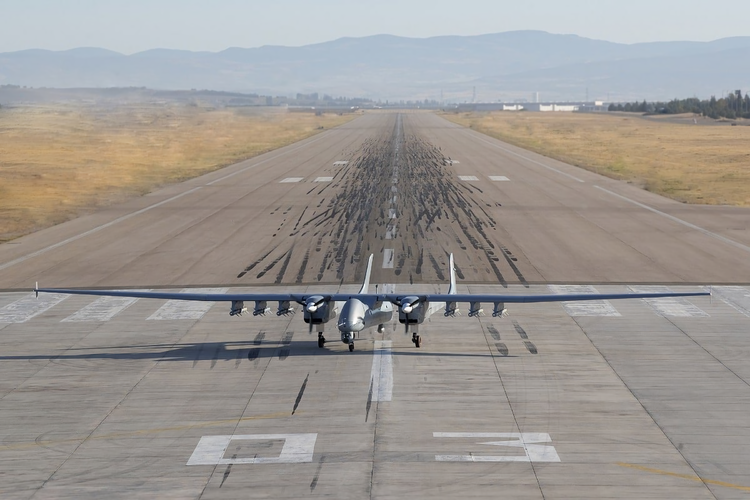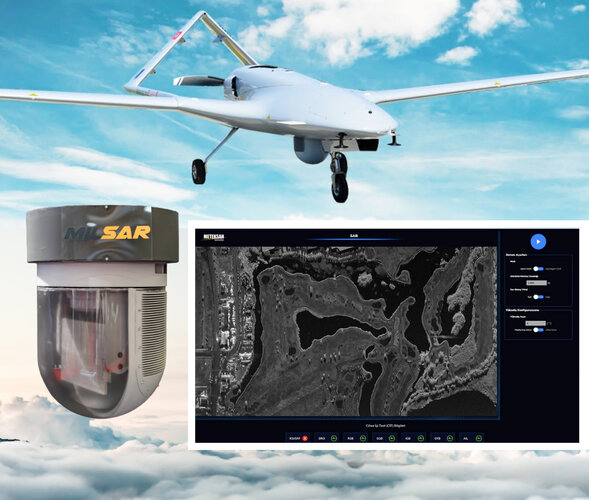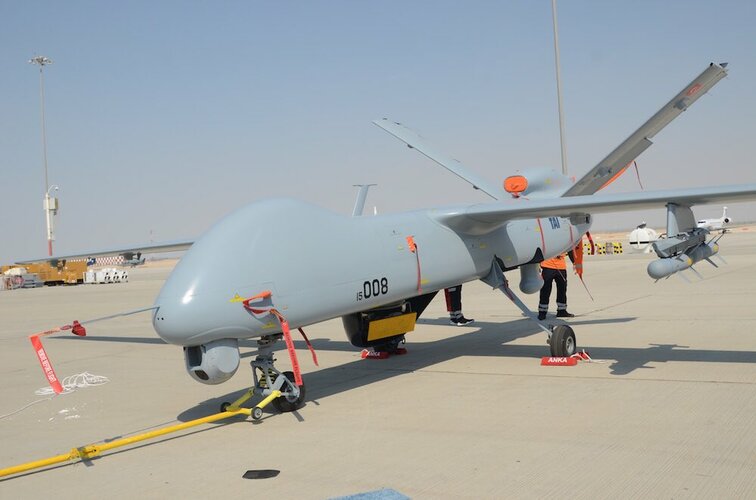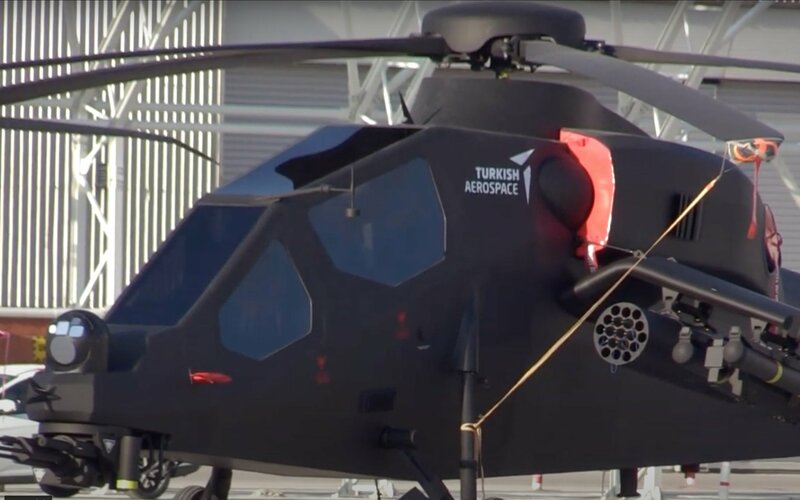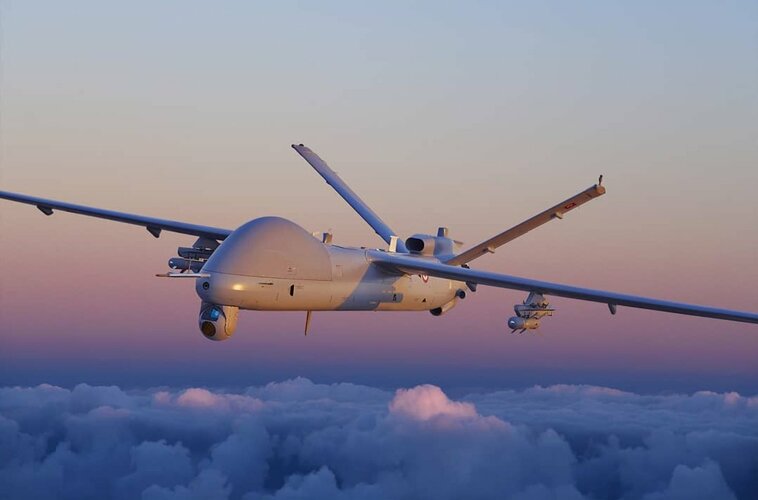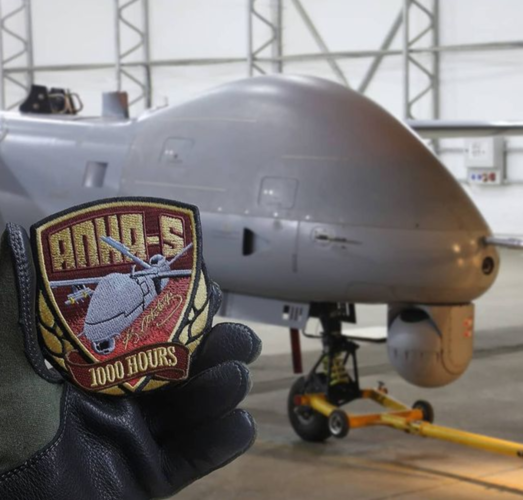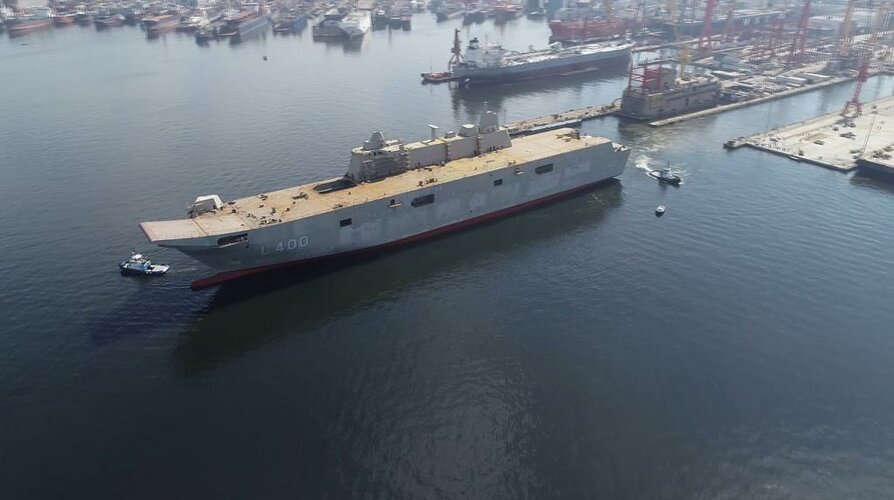I did a google search on Pole-21 and according to russian news service TASS it is a distributed GPS/Glonass satnav jamming system. This would seem to indicate the TB2 can operate in a GPS-degraded environment.Hakobyan got detained for his remarks, on Russia supplying Pole-21 to Armenia and that after some modifications to the TB2, Pole-21 was not able to stop TB2 - which I'm guessing would be the SATCOM enabled ones.
View: https://twitter.com/UGhost01/status/1329464070962081793?ref_src=twsrc%5Etfw%7Ctwcamp%5Etweetembed%7Ctwterm%5E1329513095534931969%7Ctwgr%5E&ref_url=https%3A%2F%2Fdefencehub.live%2Fthreads%2Fazerbaijan-and-armenia-clash-over-nagorno-karabakh-region-updates-discussion.1423%2Fpage-285
You are using an out of date browser. It may not display this or other websites correctly.
You should upgrade or use an alternative browser.
You should upgrade or use an alternative browser.
Turkish UAV & UCAV Developments
- Thread starter Combat-Master
- Start date
- Joined
- 15 July 2020
- Messages
- 1,494
- Reaction score
- 4,600
jsport
what do you know about surfing Major? you're from-
- Joined
- 27 July 2011
- Messages
- 7,736
- Reaction score
- 5,755
- Joined
- 15 July 2020
- Messages
- 1,494
- Reaction score
- 4,600
Ukraine to buy 5 more Turkish Bayraktar TB2 drones in 2021
"The decision has been made and planned. Next year, we will procure five new Bayraktars for the needs of the Armed Forces of Ukraine,” Ukrainian Armed Forces Chief of General Staff Col. Gen. Rusan Khomchak was quoted as saying by the country’s Armiya Inform.Khomchak said the drones have “somewhat different tactical and technical characteristics, including (their) altitude and effective range.”
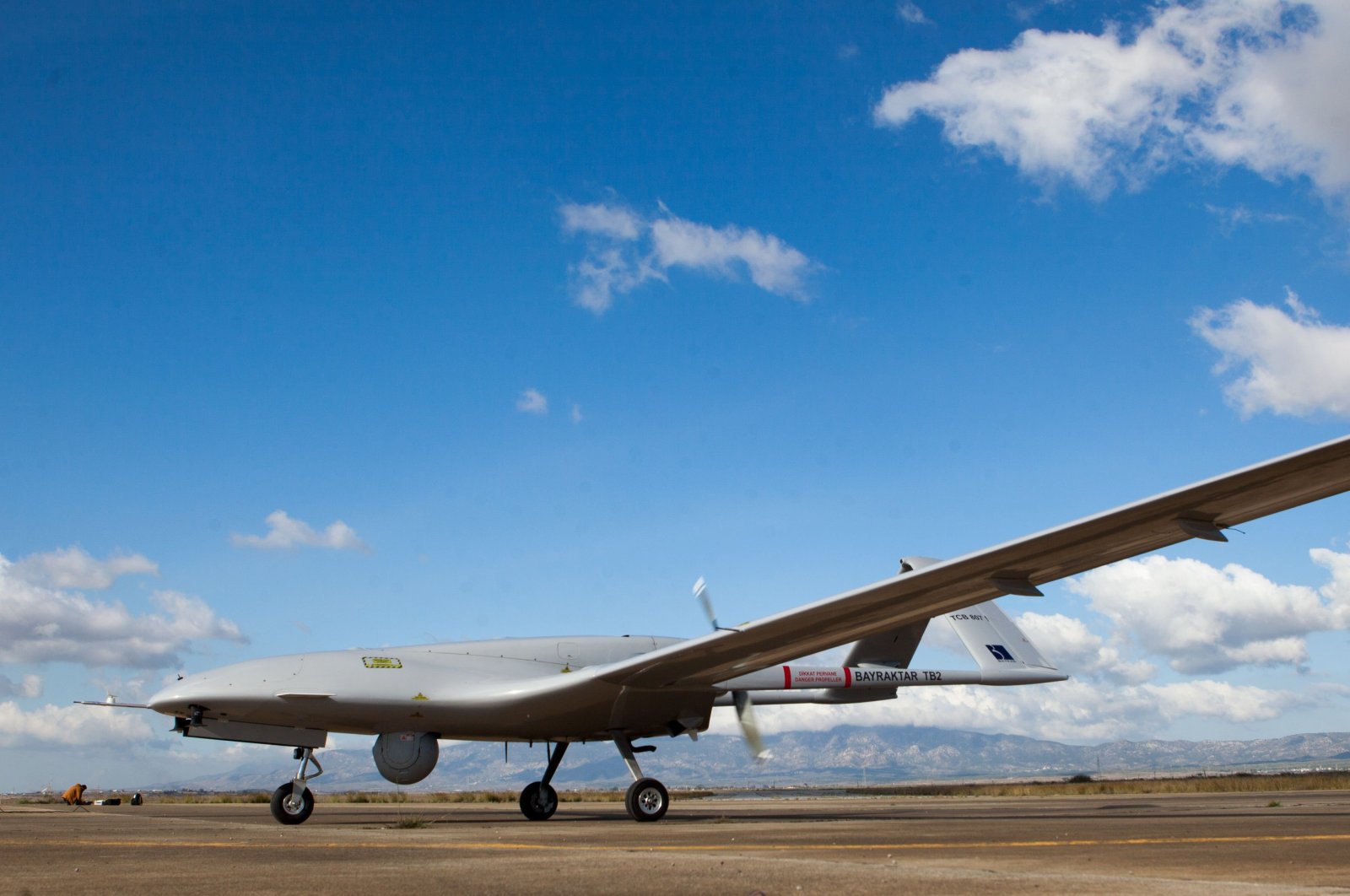
Ukraine to buy 5 more Turkish Bayraktar TB2 drones in 2021
Ukraine is set to purchase five more Turkish-made Bayraktar Tactical Block 2 (TB2) unmanned aerial vehicles (UAVs) next year, local media reports said...
- Joined
- 15 July 2020
- Messages
- 1,494
- Reaction score
- 4,600
They are achieving this with prototype air-frame. The serial production airframe is supposedly lighter and said to increase ISR "clean" configuration endurance to 55 hours.What is impressive is that 28 hours is endurance with the said load of 12 missiles. Completely clean, that UAV was tested to 49 hours of endurance.
AKSUNGUR Carved Its Name into the Skies in 2020 - TAI MAGAZINE | #118
AKSUNGUR, the newest and most assertive member of the Unmanned Aerial Vehicle (UAV) ANKA, made a memorable impression with its achievements in 2020. The aerial vehicle, which has a high payload capacity, has performed two record-breaking flights showcasing its striking performance in intelligence, surveillance, reconnaissance, and attack tasks, and its capabilities for long-term operations up to 40,000 feet.
The strongest in the ANKA family
Always striving to present its users with stronger, more qualified, and safer products, Turkish Aerospace, in August 2017, started working on the design and manufacture of an aerial vehicle which can stay in the air for a longer period of time and carry more payload. Considering the achievements of ANKA, the new aerial vehicle would meet the changing needs of users based on advancing technologies. Led by Turkish Aerospace UAV Systems Executive Vice President Dr. Ömer Yıldız, the operations were planned to be completed in a short period of 17 months. Built on ANKA’s current avionic architecture and software capabilities, the new aerial vehicle’s conceptual design process was the first phase to be completed. In February 2018, the company completed the preliminary design process and held the Critical Design Meeting for the vehicle a few months later
Borrowing its software and equipment from the ANKA series, AKSUNGUR was designed with a new wing platform to carry more payload than its product family. The company designed the new unmanned aerial vehicle’s wing platform using the wetlaid process and rule of thumb instead of resinimpregnated composite materials called pre-preg composite fibers and proved once again that it’s one of the few companies in the world which can manufacture wetlaid wing composites in similar sizes. Throughout the process, the company centralized the product and program management and rolled out its new UAV named "AKSUNGUR" in January 2019. A medium-altitude, long-endurance unmanned aerial vehicle with EO/IR, SAR, and SIGINT payloads and various air-toground weapons, AKSUNGUR performed its first flight on March 20, 2019 and made its family very proud. The aerial vehicle managed to stay in the air for 4 hours and 20 minutes during its first flight.
Two record-breaking flights in 2020
With newly designed features such as guidance control system, structurals, flight mechanics, landing gear, and an engine and fuel system that are different from ANKA, AKSUNGUR was a source of great excitement when it stayed in the air nearly 28 hours for the first time with full ammunition. Having cemented its success with a 49-hour flight, the unmanned aerial vehicle performed a flight, which was controlled from Turkish Aerospace facilities, with 12 MAM-Ls. Additionally, it also performed its first shooting drill with the TEBER guidance kit for ammunition developed by Roketsan during a 49-hour flight. During this flight at 20,000 feet, AKSUNGUR followed a route in the shape of a crescent and a star to draw our country’s flag in the skies.
The test flight, performed by four test pilots and three flight test engineers from Turkish Aerospace, was executed thanks to the efforts of a big team comprising the departments of operations, quality, and support, and the designers. Just like in previous tests, during this flight, the AKSUNGUR model's performance measured up to test data.
AKSUNGUR, which has high autonomous capabilities, performed the flight in a favorable environment and in isolation. All data was tracked and collected under the management of assigned test pilots (in periods of eighthour shifts) and flight test engineers in coordination with the Flight Test Management Center including design engineers from various disciplines. Thanks to the efforts of Turkish Aerospace teams, which didn’t encounter any negative data, AKSUNGUR succeeded in standing out among its peers with its low-cost, long-endurance payload carrying capabilities.
The unmanned aerial vehicle, which led to numerous moments of pride by staying in the air for 49 hours in its 59th flight, has completed a total of 300 flight hours. The vehicle, whose model was first exhibited at the Paris Airshow and the 1/1 scale of which was first displayed at the International Defence Industry Fair (IDEF), will be equipped with a special fuselage in the second phase. The company aims to take this improved version of AKSUNGUR into the skies soon and to make sure its stays in the air for 55 hours.
- Joined
- 15 July 2020
- Messages
- 1,494
- Reaction score
- 4,600
- Joined
- 29 November 2010
- Messages
- 1,776
- Reaction score
- 3,481
Kazakhstan now interested in the TB2
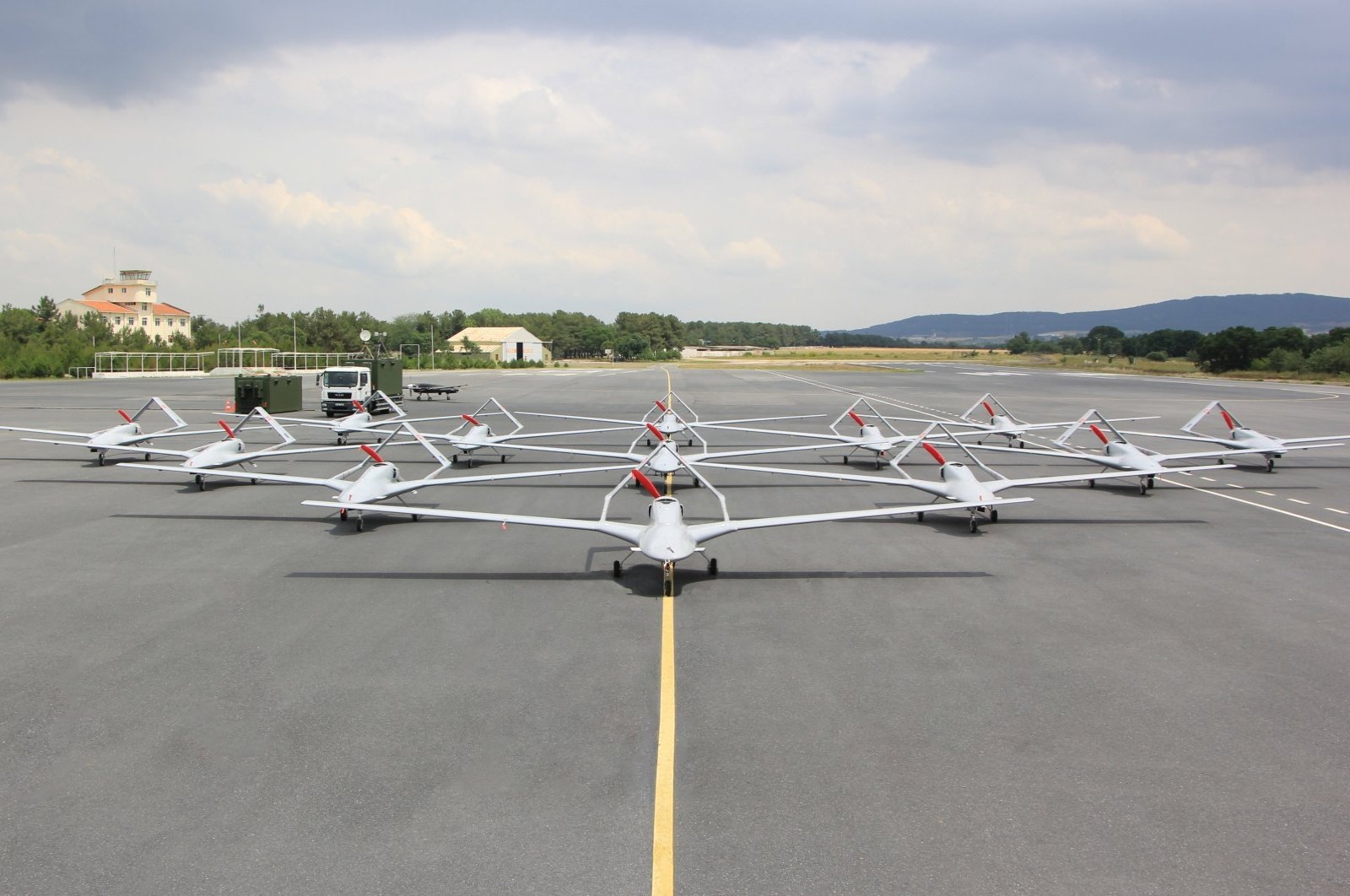
 www.dailysabah.com
www.dailysabah.com

Kazakhstan may ditch Chinese UAVs for Turkish Bayraktar TB2s, Russian media claims
Kazakhstan is considering the purchase of Bayraktar Tactical Block 2 (TB2) unmanned aerial vehicles (UAVs) over Chinese drones after the Turkey-made...
Tunisia allegedly orders 3 Anka UAV:
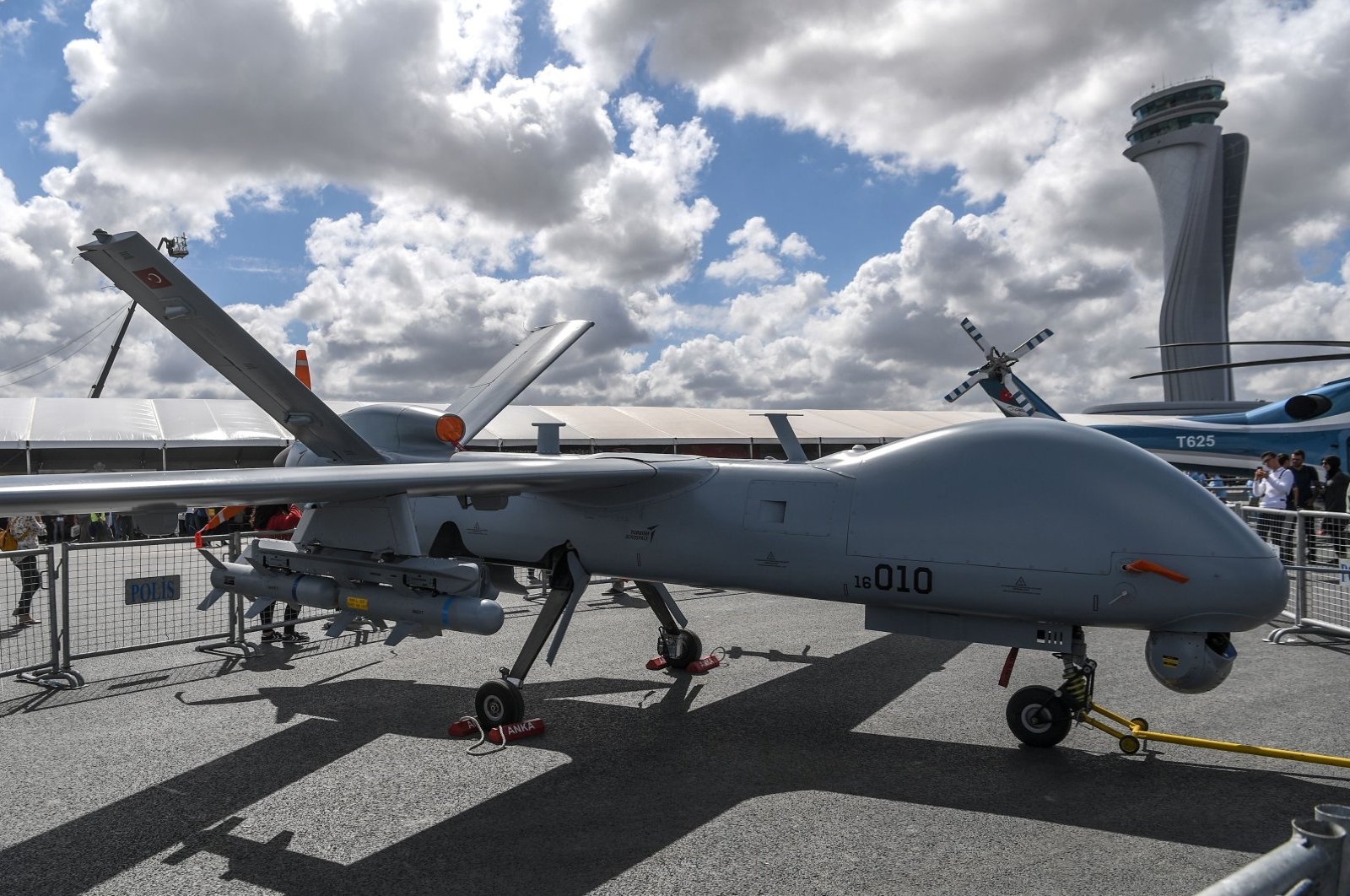
 www.dailysabah.com
www.dailysabah.com
Turkish Aerospace Industries (TAI) is to make its first Anka medium-altitude long-endurance (MALE) unmanned aerial vehicle (UAV) export to Tunisia, local media reported on Sunday.
TAI will deliver three Anka UAVs and three Ground Control Systems to the Tunisian Air Force Command, according to Turkish newspaper Habertürk.

Turkish Aerospace Industries to make 1st Anka UAV export to Tunisia: local media
Leading Turkish defense industry firm Turkish Aerospace Industries (TAI) is to make its first Anka medium-altitude long-endurance (MALE) unmanned aerial...
- Joined
- 15 July 2020
- Messages
- 1,494
- Reaction score
- 4,600
UK defense chief commends Turkish combat drone
"The roots of these drones are born out of Turkish innovation," Ben Wallace said in a webinar organized by the Royal United Services Institute for Defense and Security Studies (RUSI), a British security think tank."Prevented from gaining access to exquisite foreign programs, they (Turkey) did what we used to do so well – they innovated."
Wallace said the Turkish drone has the capability to present "real challenges to the enemy."
"The TB2 and its accompanying munitions combine technical abilities with an affordability that means their commanders can tolerate some attrition while presenting real challenges to the enemy," he said.
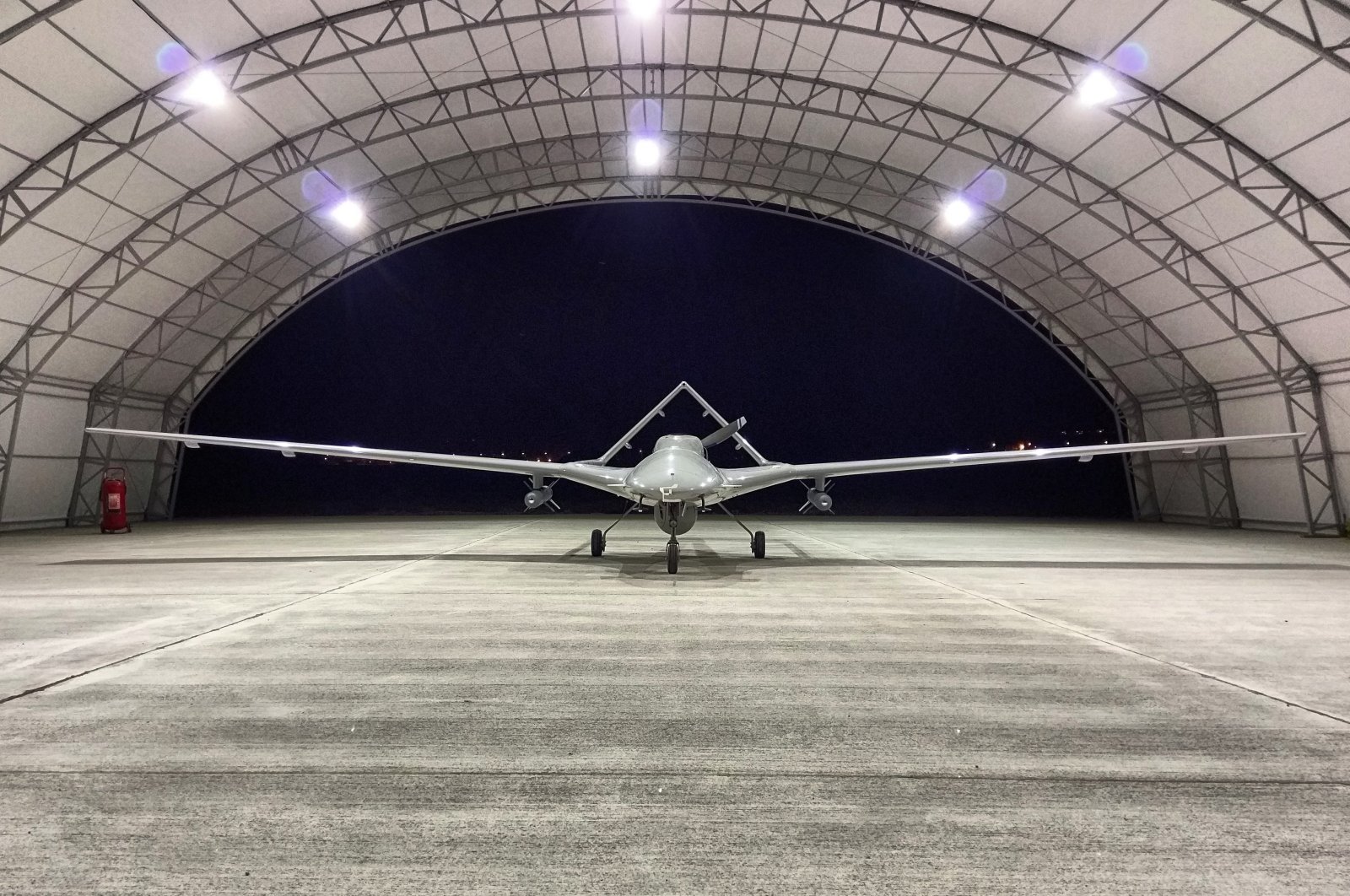
UK defense chief commends Turkish combat drone
Turkey's unmanned aerial vehicle (UAV), the Bayraktar TB2, has been responsible for the destruction of hundreds of armored vehicles and even air...
- Joined
- 15 July 2020
- Messages
- 1,494
- Reaction score
- 4,600
Gonna post this here, Turkey is also working on unmanned surface vehicles - Here is a collaborative project from; Meteksan and ARES Shipyard
View: https://www.youtube.com/watch?v=8XA_LgN_KMk&t=0s
Ulaq SIDA
Length:11m
Speed:65km/h
Range:400km
Payload: 2000kg
Lanching to sea: Decmber 2020
ULAQ SIDA
Various configurations of this vehicle will be developed with Mine-Sweeping and Electronic Warfare Variants.
View attachment 643085
Intelligence gathering and jamming variant
View attachment 643086
Anti-Surface Warfare Variant
View attachment 643087
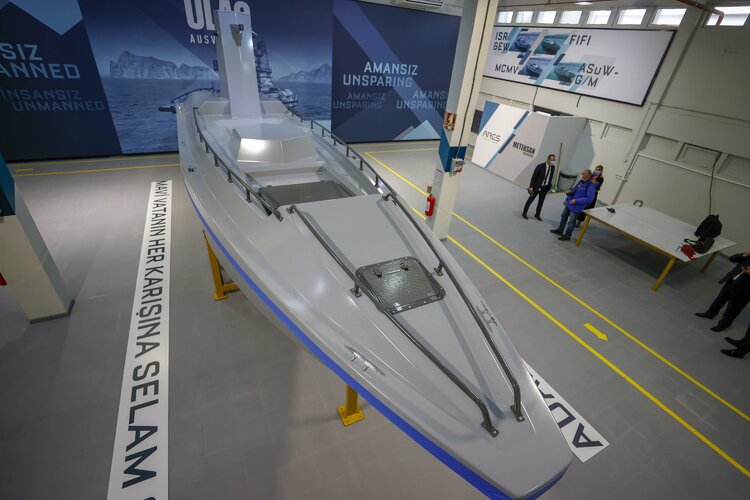
- Joined
- 15 July 2020
- Messages
- 1,494
- Reaction score
- 4,600
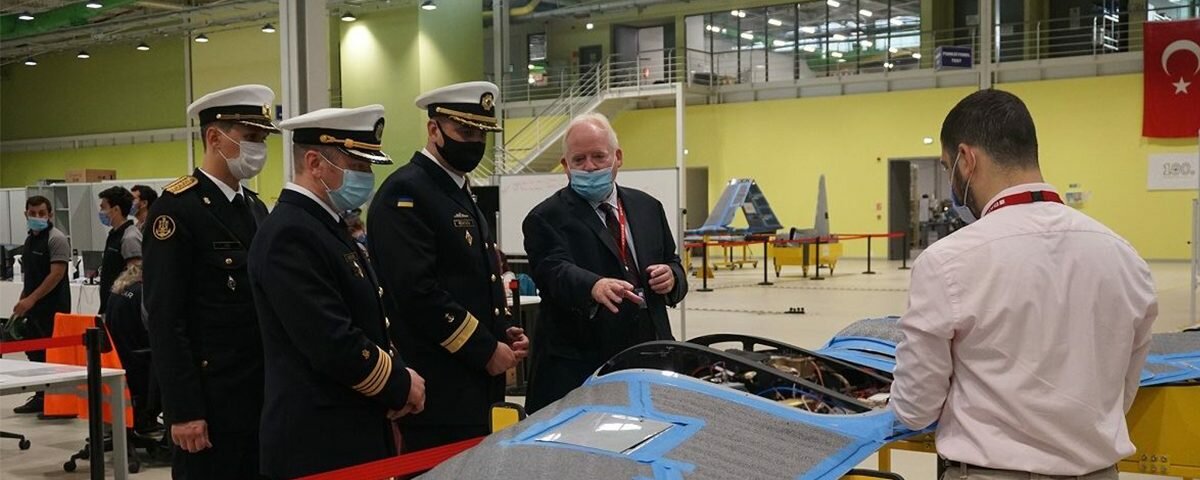
Ukranian navy commander Oleksiy Neijpapa: "We have tested the TB2 activities on maritime missions. We found it very capable and we're going to order a number TB2s for our navy". (Paraphrasing)
https://www.hurriyet.com.tr/dunya/ukraynali-komutandan-turk-savunma-sanayine-ovgu-41705532
- Joined
- 15 July 2020
- Messages
- 1,494
- Reaction score
- 4,600
- Joined
- 15 July 2020
- Messages
- 1,494
- Reaction score
- 4,600
Türksat5A sent into orbit from Cape Canaveral, Florida at 8.26 p.m. Thursday (Friday GMT0126, 4.26 a.m. in Turkey) – will settle into its orbit within four months and start service in the second half of 2021, according to Turkey’s Transport and Infrastructure Ministry.
Carrying 42 Ku-band transponders. The expected on-orbit life time will be 15 years.

Will significantly increase bandwidth for Turkey's SATCOM enabled Unmanned Aircraft
Carrying 42 Ku-band transponders. The expected on-orbit life time will be 15 years.
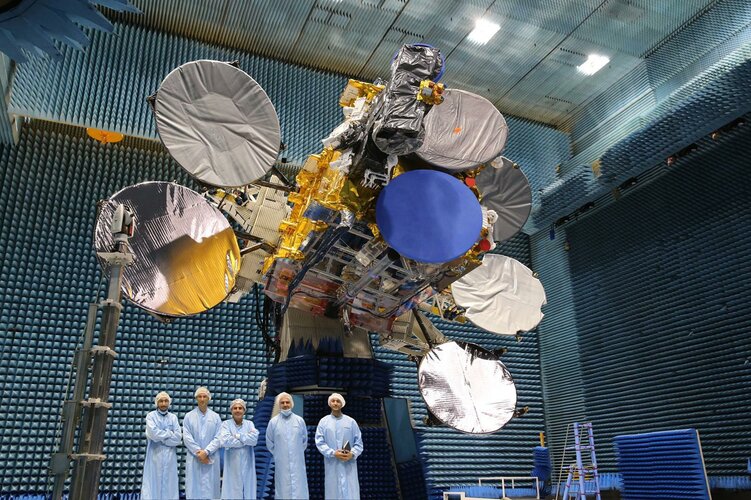
Will significantly increase bandwidth for Turkey's SATCOM enabled Unmanned Aircraft
- Joined
- 15 July 2020
- Messages
- 1,494
- Reaction score
- 4,600

Meteksan Defence MILSAR SAR/GMTI Radar Provides Outstanding Capabilities to Tactical UAVs
MILSAR, which is a multi-functional radar system with SAR and GMTI Modes, initially had different technical specifications (Ka-Band and 10km range). However, after a new system with upper segment SAR/GMTI radar features was requested by both the SSB and other UAV platform manufacturers, including Baykar Defence, Meteksan Defence made significant improvements in the MILSAR's SAR/GMTI Radar feature set under a contract amendment. After a change in the contract, the frequency range of MILSAR was changed (Ku-Band), its range was increased (27km), resulting in a product that is lighter than its competitors. According to the information we received, MILSAR, which is stated to have similar performance characteristics to equivalent products despite its lightweight, can generate radar images up to 30cm resolution from 27km. Having the same mechanical interface as the standard 15-inch EO/IR FLIR turret (in this way, MILSAR can be installed instead of EO/IR payload when necessary), MILSAR provides Tactical UAVs with 360-degree scanning and surveillance capability regardless of weather conditions.More about it here;
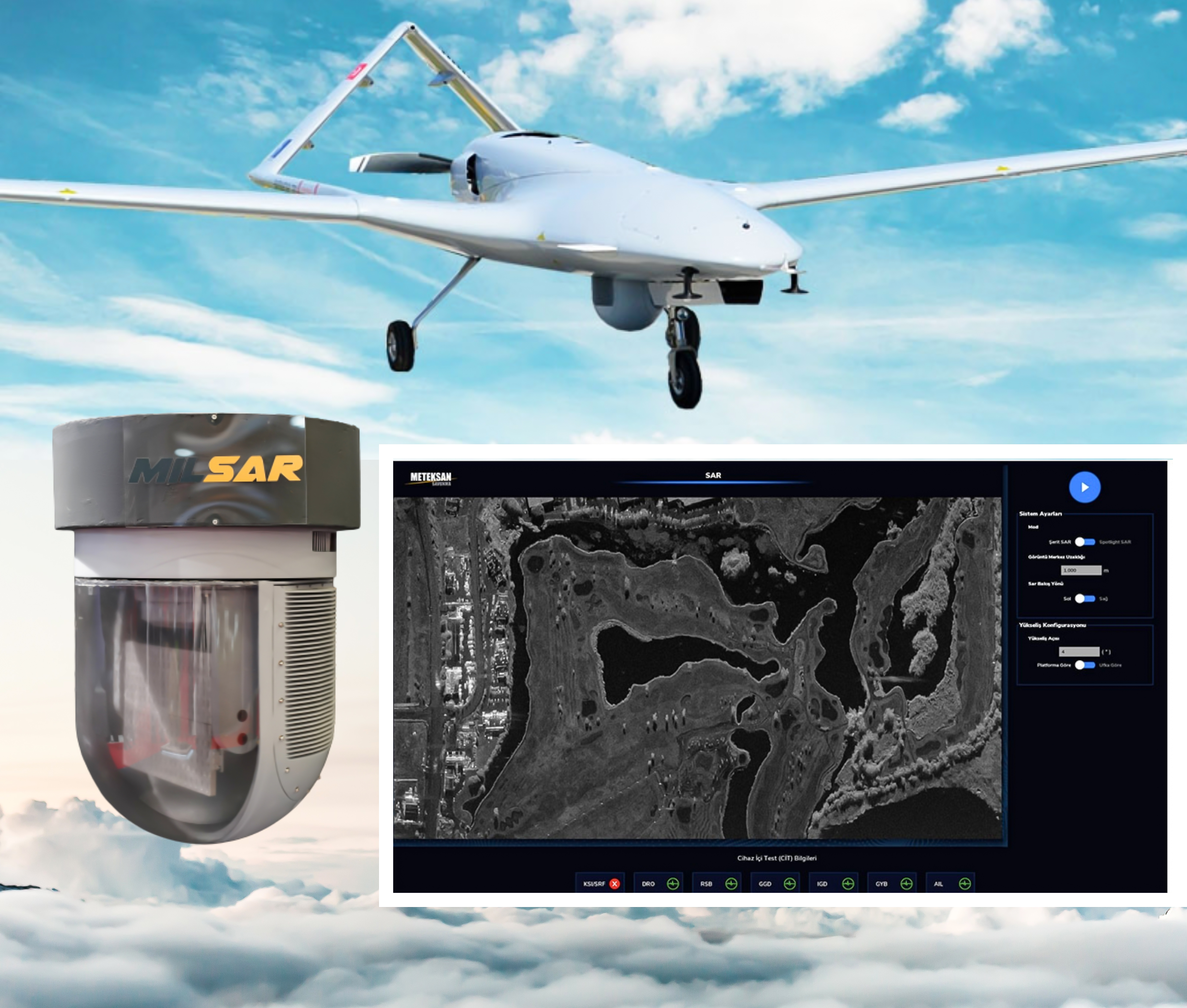
Meteksan Defence MILSAR SAR/GMTI Radar Provides Outstanding Capabilities to Tactical UAVs
MILSAR generate radar images up to 30cm resolution from 27km.
 www.defenceturkey.com
www.defenceturkey.com
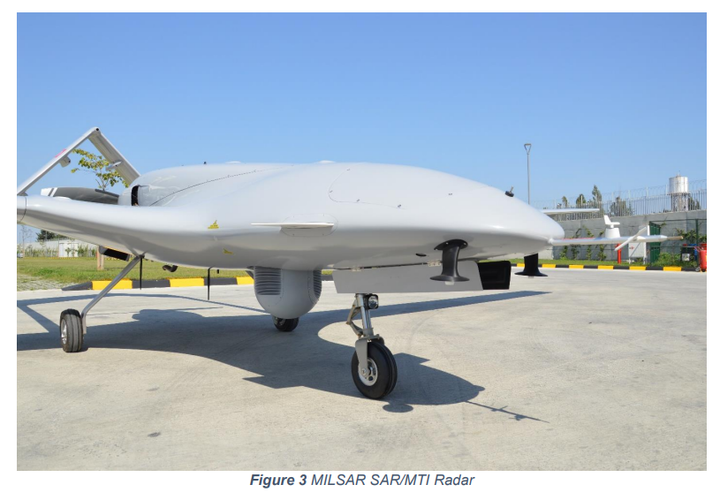
Last edited:
- Joined
- 15 July 2020
- Messages
- 1,494
- Reaction score
- 4,600
- Joined
- 15 July 2020
- Messages
- 1,494
- Reaction score
- 4,600
The Mini SAR (m-SAR ™) Tactical SAR System, which has a pod structure in weight and volume compatible with the Roketsan MAM-L Smart Ammunition body, weighs approximately 22kg, 16cm in diameter and 95cm in length, and its hourly energy requirement is below 300W. The m-SAR ™ Tactical SAR System, which can operate up to 30,000ft altitude, can be used with the FLIR payload located in the nose in Tactical UAVs thanks to its structure that can be mounted under the wing (thus it can continue to provide high resolution images in weather conditions where FLIR is ineffective) allows. The m-SAR ™ Tactical SAR System, which has high MTCBF, internal INS / GPS and an internal Data Recording Unit, can be integrated into helicopters and small fixed wing aircraft in addition to Tactical UAVs. m-X-Band AESA SAR ™ Tactical SAR System; It has Stripmap, Spotlight, GMTI, DMTI, CCD, Sea Search and ISAR Modes.



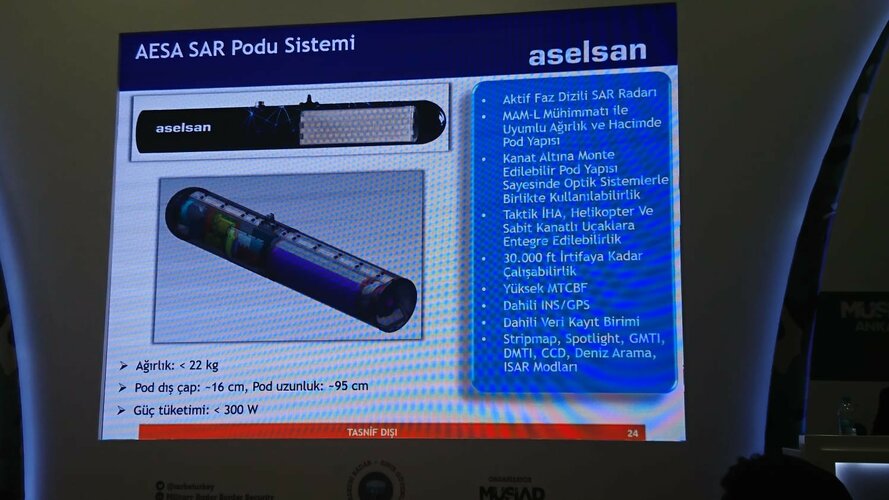
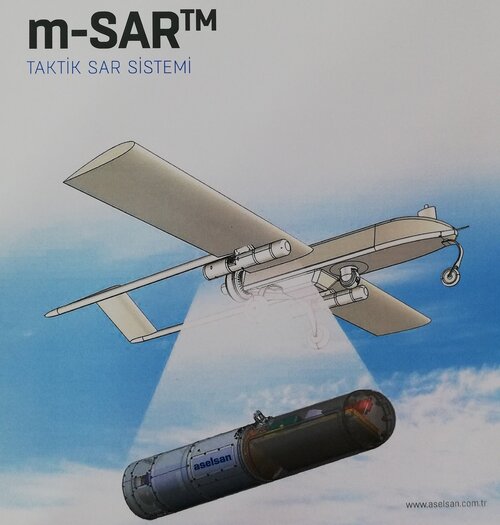
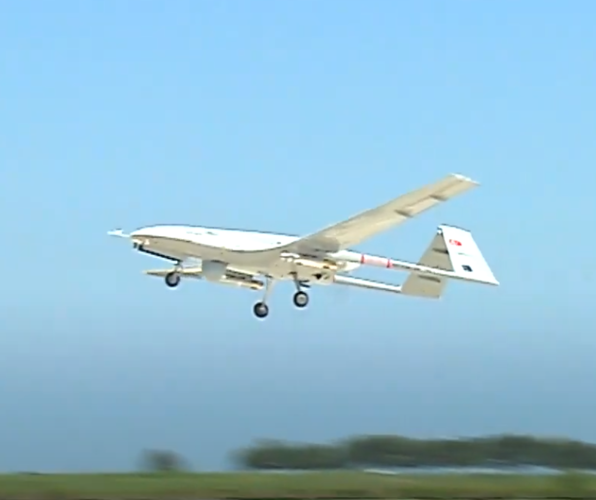
- Joined
- 15 July 2020
- Messages
- 1,494
- Reaction score
- 4,600
Lapis Aviation activated its 3,500 square meter mass production UAV factory. Rotary, Vtol, multi-rotor UAV and gibbal systems will be produced at the facility. The facility has the capacity to produce 150 Lap 60 Uav per month and 50 VTOL Uav in a year.


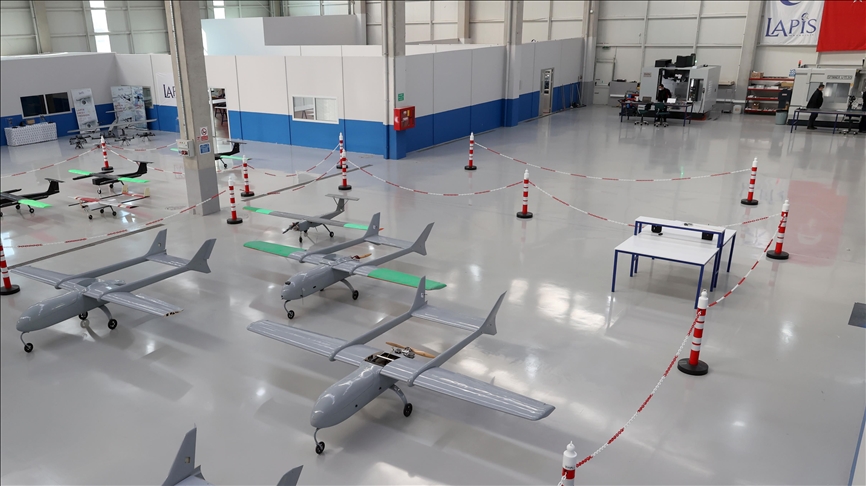
- Joined
- 15 July 2020
- Messages
- 1,494
- Reaction score
- 4,600
Game-changing? Today is everything game-changing. In Libya were game-changing against TB2s "Haftar's" Fulcrums.
- Joined
- 15 July 2020
- Messages
- 1,494
- Reaction score
- 4,600
Game-changing? Today is everything game-changing. In Libya were game-changing against TB2s "Haftar's" Fulcrums.
It is game-changing, the way Turkey is utilising it's tactical-class drones along with electronic warfare capabilities. It's difficult to argue otherwise, the article doesn't even mention Libya - yet you try to make a point of it. Anyway, Ben Wallace seems to think it's game-changing - and he has a lot more credentials then both you and I.
We need to look at the lessons of others. Look how Turkey has been operating in Libya where it has used Bayraktar TB-2 UAVs since mid-2019.
Those UAVs have conducted intelligence, surveillance and reconnaissance and targeting operations against frontlines, supply lines and logistics bases.
In July last year they struck the Libyan National Army controlled Jufrah airfield destroying several command and control nodes as well as two transport aircraft
Or consider Turkey’s involvement in Syria and its use of Electronic Warfare (EW), lightly-armed drones and smart ammunition to stop tanks, armoured cars and air defence systems in their tracks
According to reports Assad regime suffered heavy losses “3000 soldiers, 151 tanks, eight helicopters, three drones, three fighter jets vehicles and trucks, eight aerial defense systems and one headquarters among other military equipment and facilities.”
Even if only half of these claims are true the implications are game changing.

Defence Secretary Ben Wallace gives a speech at the Air and Space Power Conference
Defence Secretary Ben Wallace outlines air and space power in an age of constant competition.
Who in their right mind will send a manned plane against an unmanned plane in the future ?
AESA radar and WVR/BVR missiles - Akinci strike drone. $25mil a piece.
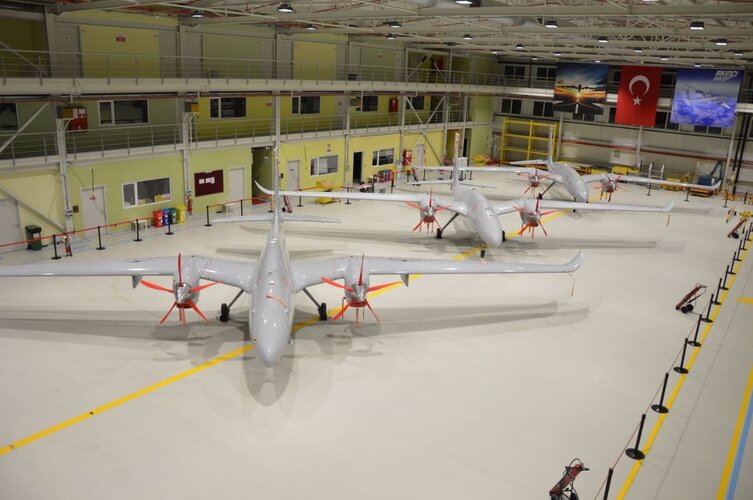
Last edited:
- Joined
- 24 November 2008
- Messages
- 1,549
- Reaction score
- 2,612
- Joined
- 15 July 2020
- Messages
- 1,494
- Reaction score
- 4,600
A Mock-up of a manned version, happy?But "manned version has also been photographed" is not a manned version, but merely a mock-up.
---
Baykar CEO Haluk Bayraktar: Akıncı will be in the inventory within a few months. Tests continue. You cannot even buy this system from abroad with money. - It has a mission radius of 2,500 km with all its smart ammunition and 5,000 km if you use it for reconnaissance and intelligence purposes.
Baykar CEO Haluk Bayraktar: Turk, who designed the radar altimeter of the reconnaissance vehicle Curiosity, which landed on Mars before Perseverance, returned to our country and is currently working as a consultant in Baykar.
Source: https://twitter.com/kamerknc
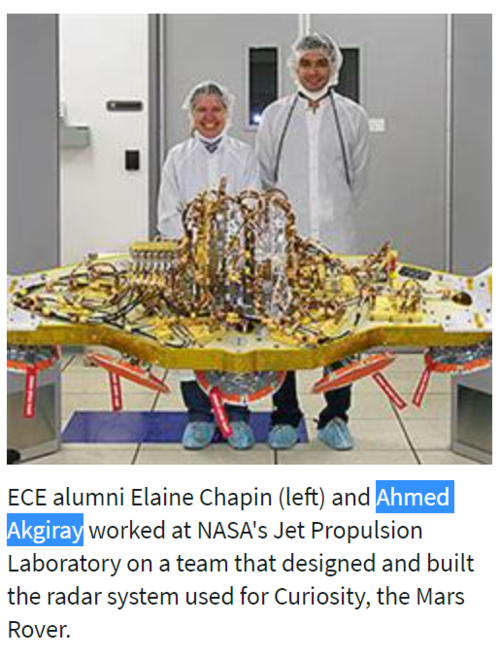
For alumni Chapin and Akgiray, forgetting leads to unforgettable success
For alumni Chapin and Akgiray, forgetting leads to unforgettable success
Last edited:
red admiral
ACCESS: Top Secret
- Joined
- 16 September 2006
- Messages
- 1,809
- Reaction score
- 2,389
You cannot even buy this system from abroad with money. - It has a mission radius of 2,500 km with all its smart ammunition and 5,000 km if you use it for reconnaissance and intelligence purposes.
That's because you'd buy a Reaper instead though?
- Joined
- 15 July 2020
- Messages
- 1,494
- Reaction score
- 4,600
You cannot even buy this system from abroad with money. - It has a mission radius of 2,500 km with all its smart ammunition and 5,000 km if you use it for reconnaissance and intelligence purposes.
That's because you'd buy a Reaper instead though?
What he is trying to convey is that developing UCAV nationally is far more advantageous than buying off-the-shelf. US and Turkish interests have not aligned for over a decade in the region, so Reapers were never on the shelf to begin with..
- Joined
- 15 July 2020
- Messages
- 1,494
- Reaction score
- 4,600
- Joined
- 9 October 2009
- Messages
- 21,979
- Reaction score
- 13,645

Turkey’s Baykar begins designing AI-powered combat drone
The artificial intelligence-powered aircraft will be able to perform missions for five hours, and will be connected to a satellite communications data network.
- Joined
- 15 July 2020
- Messages
- 1,494
- Reaction score
- 4,600
ANKA-S 4 x MAM-L payload - On another note, range of MAM-L munition has been extended to 14km with integration of MEMS-IMU and GNS https://www.roketsan.com.tr/en/product/mam-l-smart-micro-munition/

On a side-note, the Ground Power Unit next to the aircraft is also made in Turkey
ASP1000 series solid state Ground Power Units (GPU), are designed to provide 28.5V DC power by converting from mains for the initial movement of aircraft engines and its maintenances in hangars. It is environmentally friendly with its silent structure and zero exhaust emission. By its compact structure and superior maneuverability, it can be easily used by single operator.

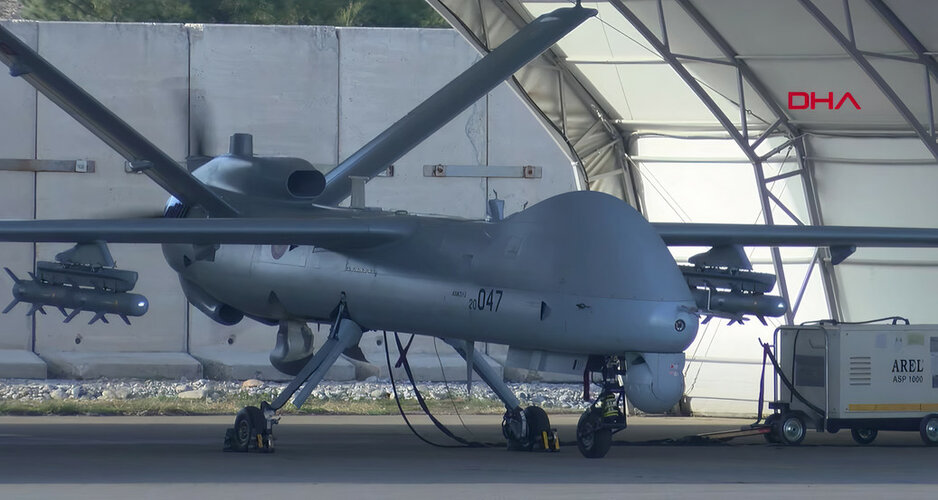
On a side-note, the Ground Power Unit next to the aircraft is also made in Turkey
ASP1000 series solid state Ground Power Units (GPU), are designed to provide 28.5V DC power by converting from mains for the initial movement of aircraft engines and its maintenances in hangars. It is environmentally friendly with its silent structure and zero exhaust emission. By its compact structure and superior maneuverability, it can be easily used by single operator.

Last edited:
- Joined
- 9 October 2009
- Messages
- 21,979
- Reaction score
- 13,645

Turkey plans to deploy attack drones from its amphibious assault ship
The Turkish government hopes to transform its landing helicopter dock Anadolu into a carrier ship for attack drones, and has already begun tests to see if the dock ship is strong enough for the mission.
- Joined
- 9 October 2009
- Messages
- 21,979
- Reaction score
- 13,645

Korean and Israeli firms eye partnership to arm helicopter with kamikaze drones
Korea Aerospace Industries and Israel Aerospace Industries have signed a memorandum of understanding that aims to pair helicopters with loitering munitions and offer the drones to the South Korean military.
- Joined
- 15 July 2020
- Messages
- 1,494
- Reaction score
- 4,600
Turkey’s New Joint Operational Concepts Foreshadow the Future of Armed Conflict
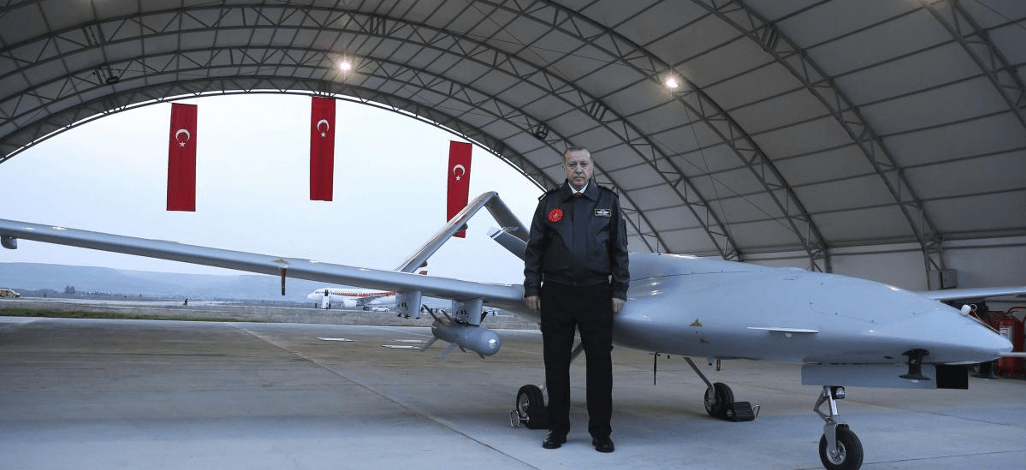
Turkey’s New Joint Operational Concepts Foreshadow the Future of Armed Conflict
Turkish President Recep Tayyip Erdogan Stands in Front of a Bayraktar TB-2 Drone. Photo Credit: AA Following the July 15, 2016 coup attempt and subsequent violent purges, Turkish Armed Forces launc…
 georgetownsecuritystudiesreview.org
georgetownsecuritystudiesreview.org
- Joined
- 9 October 2009
- Messages
- 21,979
- Reaction score
- 13,645

Two Saudi companies to produce Turkish drones
Intra Defense Technologies and Advanced Electronics Company will produce the Karayel-SU under license from the Vestel Savunma.
- Joined
- 15 July 2020
- Messages
- 1,494
- Reaction score
- 4,600
- Joined
- 15 July 2020
- Messages
- 1,494
- Reaction score
- 4,600
shows the wing compartment with the propulsion groups in the vertical position with the wing propellers open.An as of yet unknown company is developing a LHD launched UCAV which incorporates collapsing wings to reduce size within LHD.
Will be operational on Turkey's flagship TCG Anadolu which will enter service in 2022
View attachment 653560
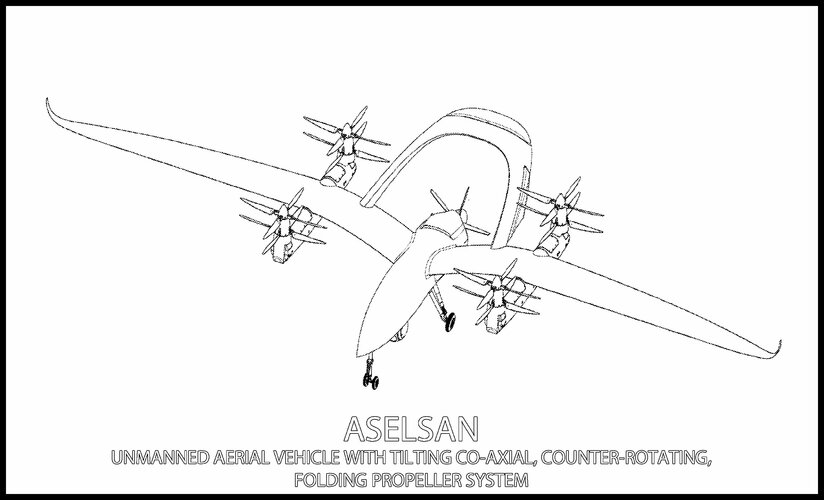
Is the view of the aerial vehicle with propulsion groups positioned for very short runway take - off and electrically assisted climbing and cruise.
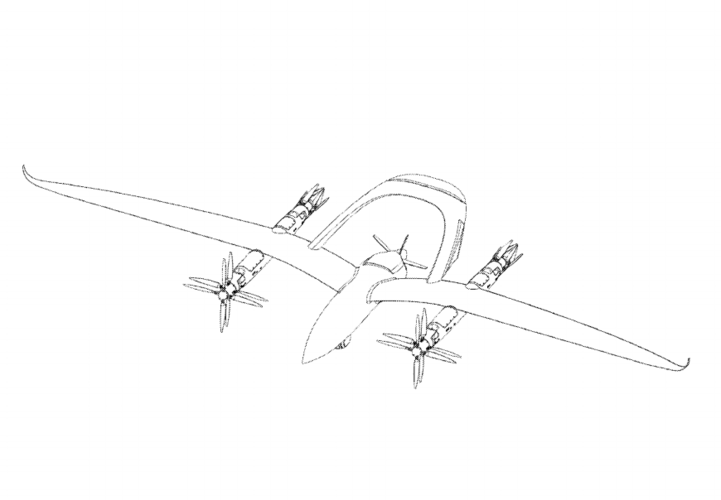
is the view of the aerial vehicle with propulsion groups positioned for a very short runway landing.
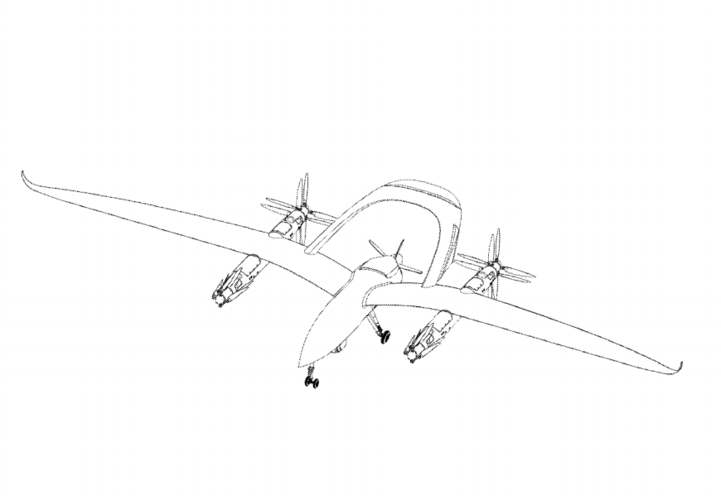
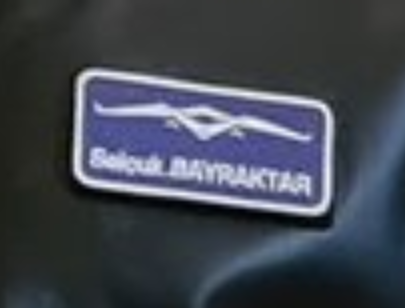
Gross Weight - 1200kg
Last edited:
- Joined
- 24 November 2008
- Messages
- 1,549
- Reaction score
- 2,612
Wow, seriously? Seems it may become the largest military VTOL UAS so far (excluding helicopter types).shows the wing compartment with the propulsion groups in the vertical position with the wing propellers open.An as of yet unknown company is developing a LHD launched UCAV which incorporates collapsing wings to reduce size within LHD.
Will be operational on Turkey's flagship TCG Anadolu which will enter service in 2022
View attachment 653560
View attachment 654407
Is the view of the aerial vehicle with propulsion groups positioned for very short runway take - off and electrically assisted climbing and cruise.
View attachment 654406
is the view of the aerial vehicle with propulsion groups positioned for a very short runway landing.
View attachment 654411
View attachment 654408
Gross Weight - 1200kg
@Combat-Master What's the source of those pictures, if I may ask?
Last edited:
- Joined
- 15 July 2020
- Messages
- 1,494
- Reaction score
- 4,600
In the interview with Selcuk Bayraktar he did say there was no UAS like it so far.Wow, seriously? Seems it may become the largest military VTOL UAS so far (excluding helicopter types).shows the wing compartment with the propulsion groups in the vertical position with the wing propellers open.An as of yet unknown company is developing a LHD launched UCAV which incorporates collapsing wings to reduce size within LHD.
Will be operational on Turkey's flagship TCG Anadolu which will enter service in 2022
View attachment 653560
View attachment 654407
Is the view of the aerial vehicle with propulsion groups positioned for very short runway take - off and electrically assisted climbing and cruise.
View attachment 654406
is the view of the aerial vehicle with propulsion groups positioned for a very short runway landing.
View attachment 654411
View attachment 654408
Gross Weight - 1200kg
@Combat-Master What's the source of those pictures, if I may ask?
WIPO file for the patent attached.
Attachments
- Joined
- 24 November 2008
- Messages
- 1,549
- Reaction score
- 2,612
Thx for the info! Will be interesting to see if it ever becomes operational.In the interview with Selcuk Bayraktar he did say there was no UAS like it so far.Wow, seriously? Seems it may become the largest military VTOL UAS so far (excluding helicopter types).shows the wing compartment with the propulsion groups in the vertical position with the wing propellers open.An as of yet unknown company is developing a LHD launched UCAV which incorporates collapsing wings to reduce size within LHD.
Will be operational on Turkey's flagship TCG Anadolu which will enter service in 2022
View attachment 653560
View attachment 654407
Is the view of the aerial vehicle with propulsion groups positioned for very short runway take - off and electrically assisted climbing and cruise.
View attachment 654406
is the view of the aerial vehicle with propulsion groups positioned for a very short runway landing.
View attachment 654411
View attachment 654408
Gross Weight - 1200kg
@Combat-Master What's the source of those pictures, if I may ask?
WIPO file for the patent attached.

